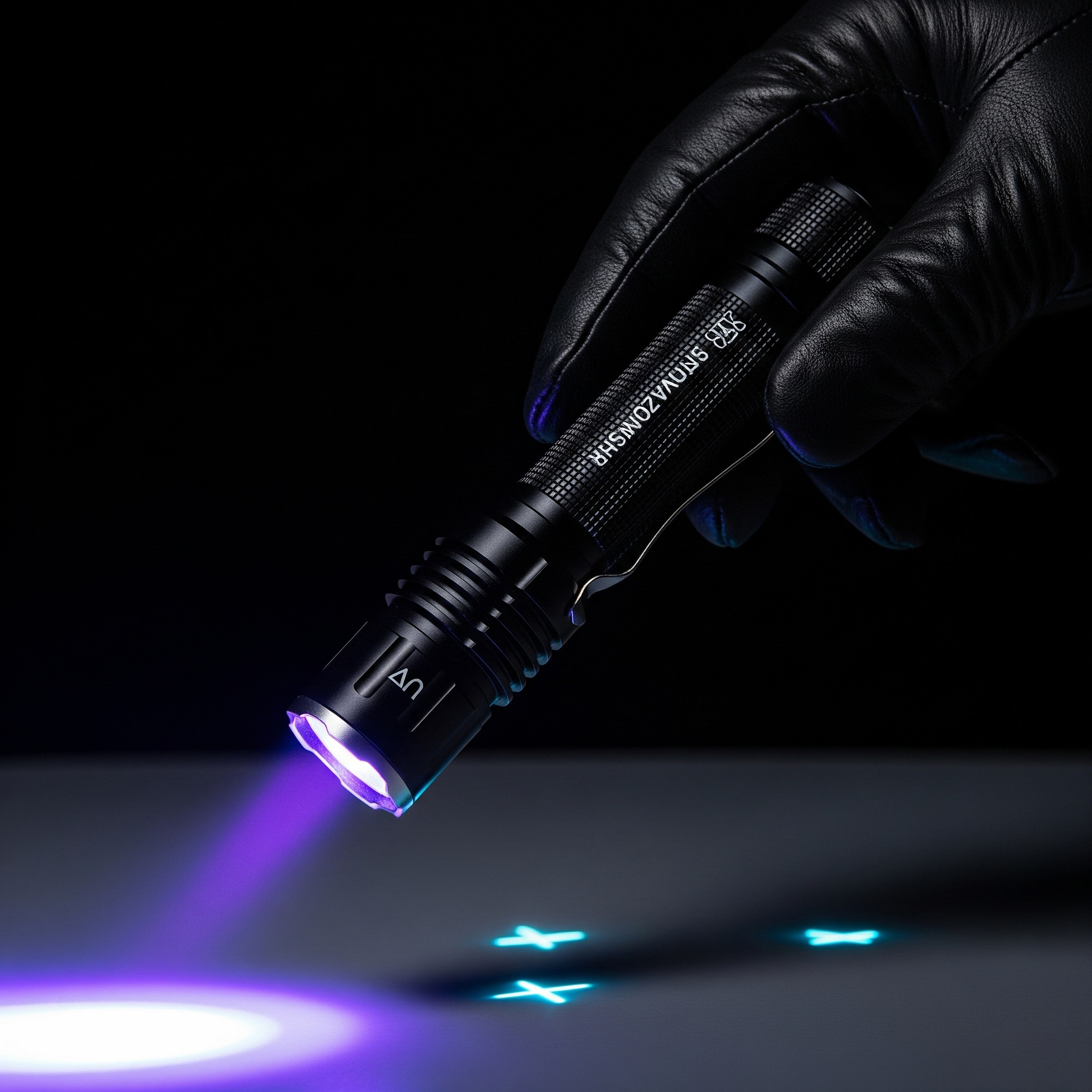UV Flashlight Safety Tips: How to Use Ultraviolet Lights Responsibly
Posted by Raymond on 26th Jun 2025
UV Flashlight Safety Tips: How to Use Ultraviolet Lights Responsibly
UV flashlights are incredibly useful for a range of applications, from pet stain detection and currency verification to forensics and mineral identification. However, ultraviolet (UV) light can pose health risks if misused. This guide outlines essential UV flashlight safety tips, explains potential hazards, and provides responsible usage recommendations to protect your eyes, skin, and those around you.

1. Understanding UV Light and Its Risks
UV light is part of the electromagnetic spectrum, located between visible light and X-rays. UV flashlights typically emit UVA rays (315–400 nm), which are relatively safer than UVB or UVC rays, but prolonged exposure can still cause harm.
Potential Health Risks:
-
Eye damage: Direct exposure may lead to retinal burns or corneal injury.
-
Skin irritation: Long exposure can cause sunburn-like effects or premature aging.
-
Material degradation: Some plastics and fabrics may fade or degrade under strong UV light.
2. UV Flashlight Safety Best Practices
| Safety Practice | Description |
|---|---|
| Avoid Direct Eye Exposure | Never point a UV flashlight at your or others’ eyes. |
| Wear UV-Protective Glasses | Use certified safety glasses that block 100% UVA/UVB. |
| Limit Skin Exposure | Wear gloves or long sleeves during prolonged use. |
| Keep Away from Children | Store UV flashlights in a safe location out of children’s reach. |
| Use the Right Wavelength | For safe general use, choose 365–395nm wavelength devices. |
| Inspect Flashlights Regularly | Check for damage, battery leaks, or lens cracks that may alter the beam. |
| Use in Well-Ventilated Areas | Prevent overheating when using high-power UV models indoors. |
3. Comparing Flashlight Types: Safety vs. Performance
| Flashlight Type | UV Wavelength | Brightness | Safety Level | Typical Use |
|---|---|---|---|---|
| Tank007 UV01 | 365nm | Low | High | Pet stains, document verification |
| Tank007 PT10 | 395nm | Medium | Medium | Mineral inspection, hotel hygiene |
| Generic High-Power UV | <365nm | High | Low | Professional forensics (with caution) |
4. What to Avoid When Using UV Flashlights
-
❌ Don’t stare into the beam, even for a second.
-
❌ Don’t use UV lights on pets’ eyes or skin directly.
-
❌ Don’t leave the flashlight running unattended.
-
❌ Avoid prolonged exposure to reflective surfaces (mirrors, glass).
5. Choosing a Safe UV Flashlight
When buying a UV flashlight, always look for:
-
Verified wavelength specs (365nm or 395nm)
-
Safety certification (CE, RoHS, FDA)
-
Manufacturer transparency and instructions
We recommend models like the Tank007 UV01 for low-risk home use and beginner-friendly applications.
6. Conclusion
While UV flashlights are valuable tools, understanding how to use them safely is essential. By taking simple precautions like avoiding eye contact, wearing protection, and choosing the correct wavelength, you can enjoy the benefits of UV technology without the risks.
If you're shopping for reliable and safe UV flashlights, browse Tank007's full collection to find the right model for your needs.
